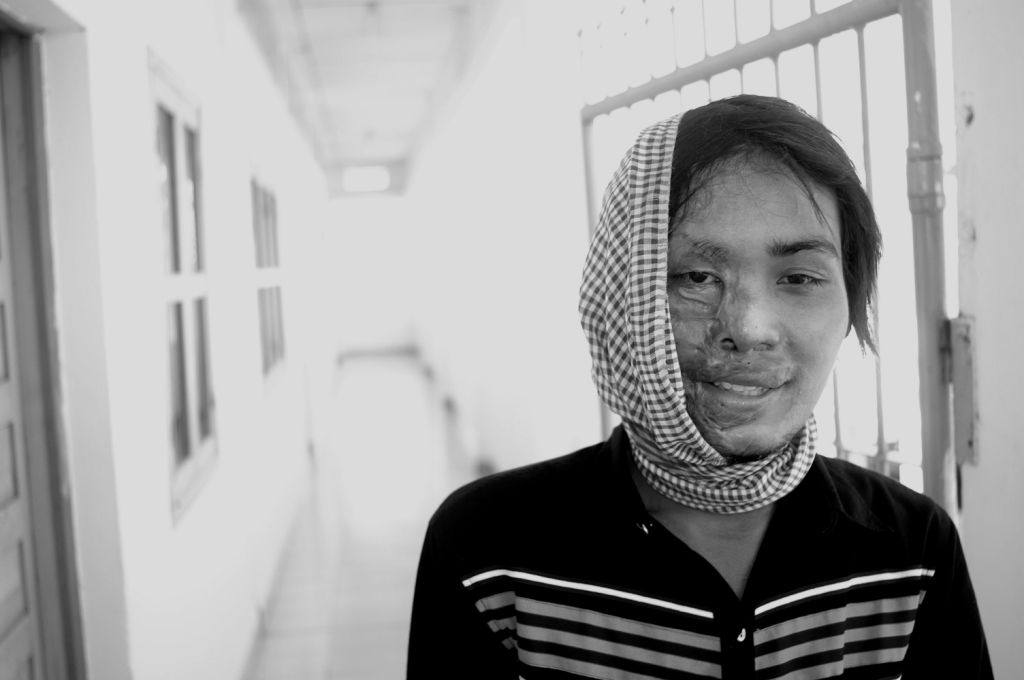 |
| Wikipedia |
Saturday January 12, 2013
Daniel Otis - Special to the Star
SIEM REAP, CAMBODIA—On Dec. 26, Yi Aun and her
19-year-old son were roused in the night. Outside, a group of men said they
wanted to buy groceries from Aun’s shuttered shop.
Aun, 40, opened the door and was doused with acid,
receiving third-degree burns to 60 per cent of her body. Her son was only
grazed. In an unusual show of police activity, three suspects were apprehended
the next day. A fourth is still wanted. Aun died from her wounds on Monday.
“It will be very interesting to see how the government
responds,” says Ziad Samman, project manager of the Cambodian Acid Survivors
Charity (CASC). “The majority of (acid) cases, approximately 90 per cent, don’t
go to trial.”
In 2012, there were seven known acid attacks in
Cambodia — a sharp decline from the 14 reported in 2011 and the 21 in 2010.
Unlike other countries, victims in Cambodia are equally divided between men and
women. According to Cambodian Center for Human Rights (CCHR) researcher Ramana
Sorn, however, the true number of attacks is likely higher.
“Some people are too afraid to speak,” Sorn says.
Nevertheless, the decrease has widely been attributed
to Cambodia’s Law on Regulating Concentrated Acid, adopted in December 2011.
Also known as the Acid Law, it introduced large fines and mandatory sentences
of up to 30 years for acid attacks.
The CASC, which played an integral role in pushing
through the legislation, was started with help from University of Toronto
surgeon Dr. Massey Beveridge.
“A facial acid burn is an injury which, for many
people, makes life itself perhaps worse than death,” he says. “They’re ghastly
injuries, and I think it’s incumbent on all of us to do what we can to prevent
them and treat those who are affected.”
In Cambodia, there is a popular perception that acid
violence is almost always linked to extramarital affairs. Although this
perception is only partially correct, it has disastrous consequences for both
survivors and the judicial process.
“More often than not, it is the survivor who is
stigmatized, not the perpetrator,” Samman says. In other words, people assume
that acid attack survivors deserve their burns.
Distrust of the judiciary and fear of their attackers
leads many survivors to accept paltry out-of-court settlements — a situation
encouraged by law enforcement officers.
“The police usually get shares of the settlements,”
Sorn says.
In the rare instances where cases do go to trial,
sentences can be light. Over the past three years, only three people have been
incarcerated for acid attacks, receiving 10-, four- and three-year sentences.
According to CASC, no survivor has ever received court-ordered compensation
payments.
None of 2012’s cases have gone to court and, with the
exception of the Dec. 26 attack on Aun — the motive for which remains unknown —
the perpetrators in all other 2012 attacks remain at large. Moreover, a promise
to regulate access to dangerous acids has yet to be enacted.
Samman acknowledges that the Acid Law has helped
reduce the number of attacks. “However, without active implementation of this
legislation, I don’t think we’ll see any sort of real difference in the long
term.”
Daniel Otis’s last story for World Weekly was about
unjust land evictions in Cambodia.

No comments:
Post a Comment